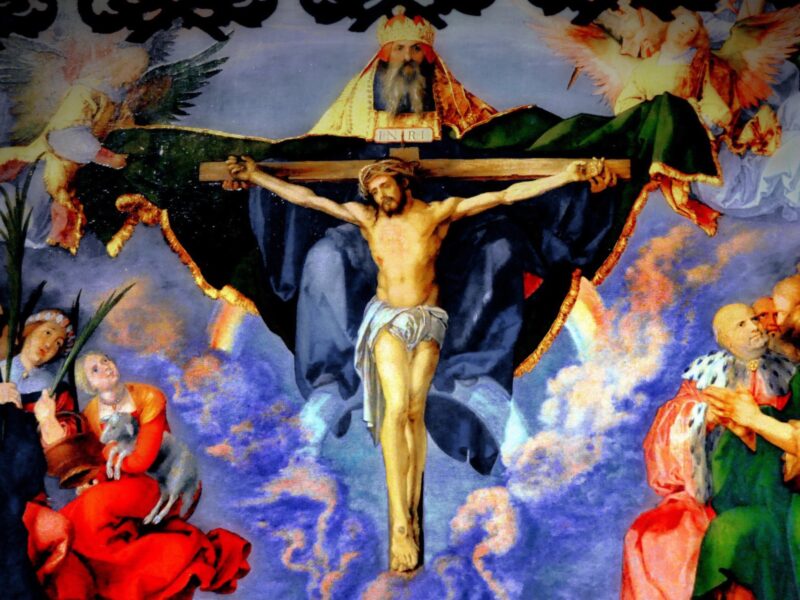
Seeing and Believing
Second Sunday of Easter (Low Sunday). Fr Robert Pollock shows us how we can understand the Church’s pilgrimage in faith through the story of St Thomas.
On the day of the Resurrection Jesus, the risen Christ, appeared early in the morning to Mary Magdalene, who eventually recognised him; he commanded her to tell the others. We meet the apostles on the evening of that day, Resurrection day, behind closed doors ‘for fear of the Jews’. The Resurrection is associated with joy and triumph, not fear. Why fear? That first day was confusing: on Good Friday the Christ died, the apostles and disciples fled, thinking that all the teaching, preaching and promises of Jesus were void. There had been great excitement in Jerusalem over the past few days, and great animosity against Jesus and his followers. The apostles had heard the news that the Christ had risen from the dead, but were perhaps still unsure, confused.
Then the Christ appeared to them, greeted them, showed them the five wounds on his body; they recognised him and were immediately filled with joy. The apostle Thomas, ‘Doubting Thomas’ had not been present on that occasion; when told of what had happed he refused to believe it was the Risen Christ, until he could see and touch, trust the evidence of his own senses. Thomas was present eight days later when the Christ again appeared to the Twelve. Jesus singled him out, and invited him to see and touch, to doubt no longer, but believe. Thomas replied ‘My Lord and my God
The first part of Thomas’s response is not surprising, but the second is very surprising and unexpected. ‘My Lord; this is a response to the evidence of his senses. He recognised the Jesus whom he had known, with whom he had walked, whose teachings he had heard. The response ‘my God’ did not come from the evidence of his senses; Thomas had been granted a special revelation into the real nature of the Christ.
The apostles were privileged; they saw the Risen Christ, the mark of the wounds. In his first appearance, Jesus told the Eleven something of what their apostolate would be; as he had been sent by the Father, he was sending them, into the world among the nations, to communicate his teachings, to forgive sins, to reconcile man to the truth and to God. To Thomas he spoke about faith; Thomas believed, because he could see; the evidence of his senses led him to acknowledge the reality of the Risen Christ. The second part of the statement was, is, a promise; blessed are those who have not seen, and yet believe. The church is a believing community, a family of faith. Many find difficulty with faith, and struggle to meet its demands. Some are like Thomas; they want to know more, to see and touch before giving their assent. At the end of this morning’s gospel passage John states the reason for writing his account of the Good News: ‘These are recorded so that you may believed that Jesus is the Christ, the Son of God, and that by believing this you may through his name.
Abraham, our father in faith, answered God’s call, and travelled with hope of the promise God had given him, that he would become the father of many nations. The Church travels in hope with the promise of everlasting life with God.
Blessed are those who have not seen, and yet believe.


